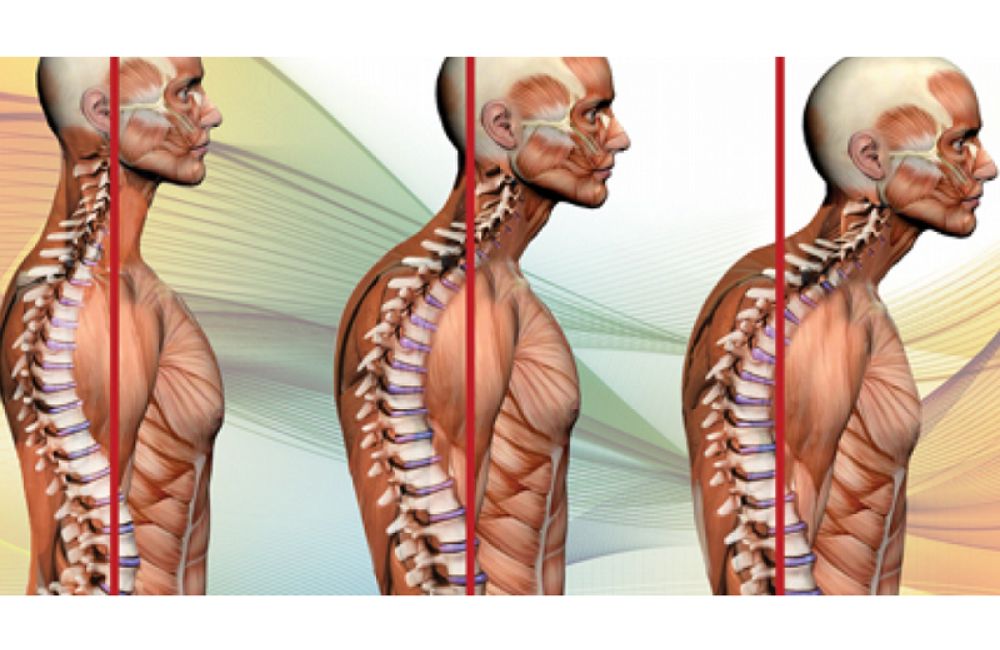
‘Dowager’s hump’ Struggling to stand straight or no matter how hard you try, you can’t seem to correct your posture?
The little hump at the bottom of your neckline and curvature on your spine signals you may have something called ‘Dowager’s hump’.
It’s a condition that curves your upper spine and can be the cause of poor posture.
Some individuals despise their Dowager’s hump so much that they are willing to go to drastic lengths to remove it.
While it is unlikely that you will ever completely reverse your Dowager’s hump, you can utilize some different exercises and techniques to reduce the extent of this condition.
In this article, we will review 7 of the best exercises for reducing the severity of a Dowager’s hump.
You’ll also like:
The 5 Best Exercises to Get Rid of Sciatica Pain In the Hip and Lower Back
Want to Age Well? Do This Simple Exercise To Build Balance and Hip Strength
Dowager’s Hump
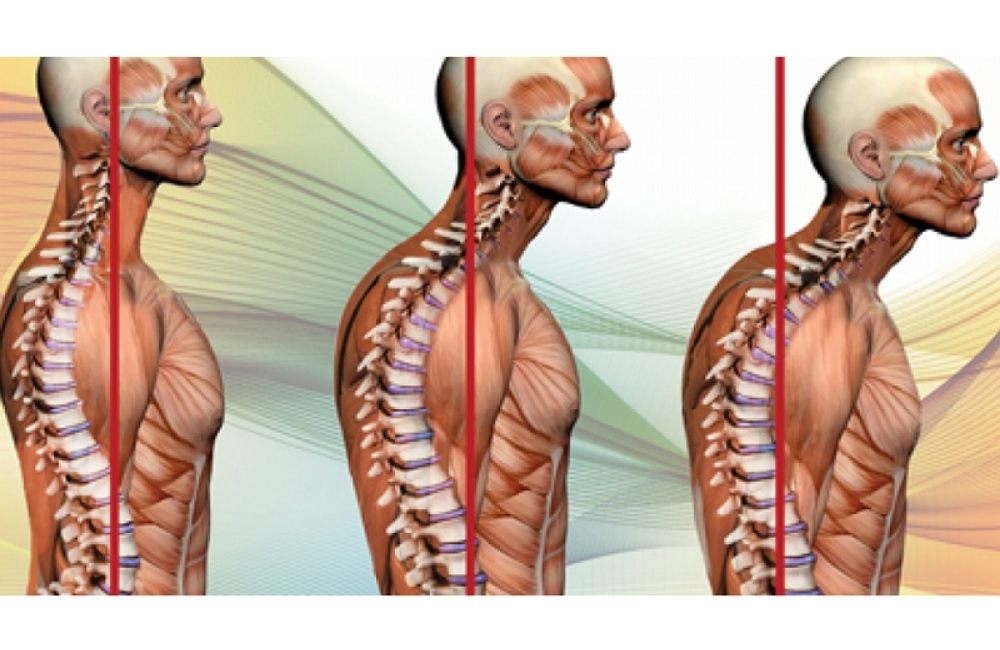
1. Seated Chin Tucks
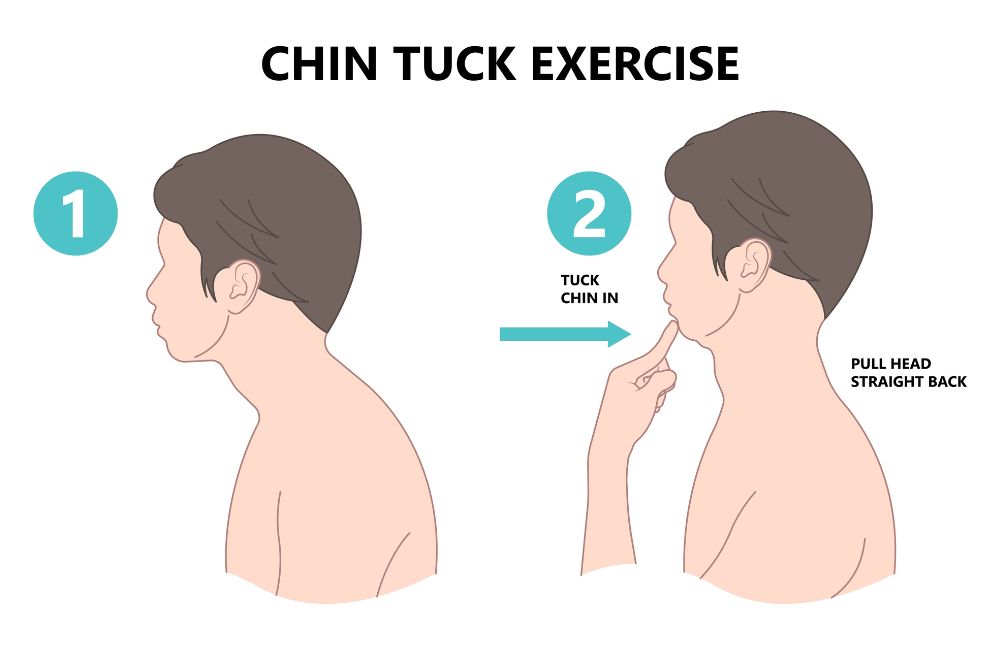
Chin tucks are an excellent exercise that all office workers should be performing. This exercise can be performed in a seated position, in a supine, or even in a prone.
By regularly completing chin tuck exercises, you’ll increase the stability and strength of your deep cervical flexors. In turn, this will help to improve your neck posture.
How to Perform:
- Positioning yourself on a firm, stable surface, sit up as tall as possible.
- Imagine that you are pulling your chin directly backward, on an imaginary line that is parallel to the ground.
- Do not allow your head to bend forward or backward.
- Hold this position for 10 seconds, then relax.
- Repeat for 10 repetitions, every day.
- As this exercise becomes easier over time, you can begin to perform the same movement supine (on your back). After that position gets easier, you can then progress to completing the move in prone (on your stomach).
2. Scapular Retractions

Poor posture in the upper back is closely associated with the development of a Dowager’s hump.
When one develops slumped shoulders, the problem is often due to weakness and instability in the rhomboids.
This exercise works the rhomboids and strengthens this area of the upper back.
How to Perform:
- In a seated position assume a perfect posture, with a straight back.
- Pull your shoulder blades back and down, as if you are squeezing a pencil between your scapulae.
- Hold this position for 10 seconds and repeat it 10 times, once per day.
3. Cat-Camel
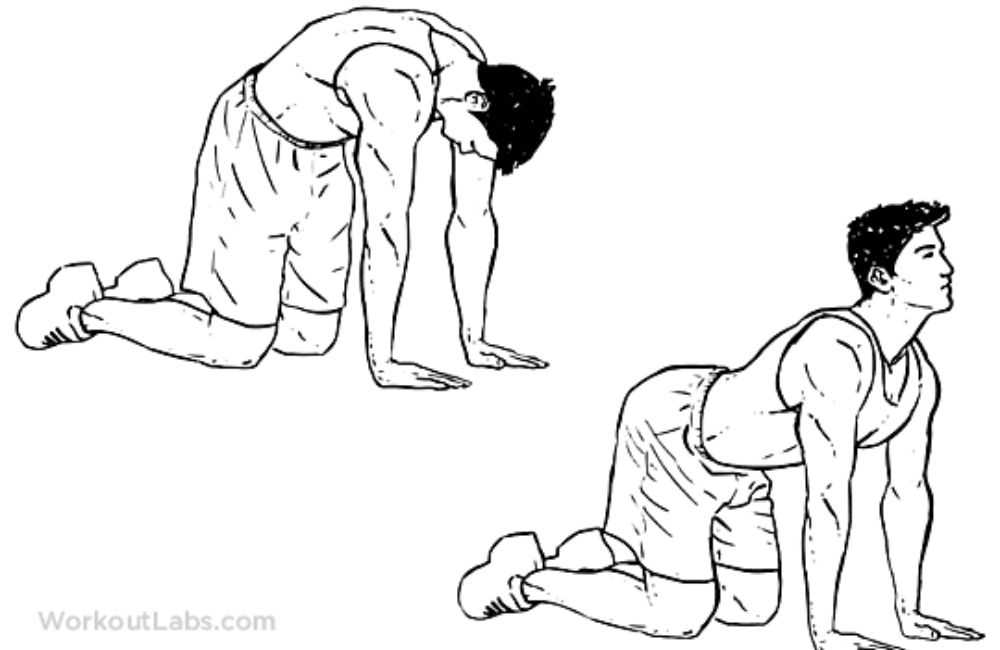
The cat-camel stretch is a well-loved pose by yogis everywhere. This pose is used in advanced, intermediate, and even beginner yoga classes.
Cat camel is particularly popular with many different patient populations for the simple reason that it feels so good!
When you perform the cat camel, you’ll stretch out your back, neck, and a large part of your upper spine.
How to Perform
- Place your hands on the floor, spaced roughly shoulder-width apart.
- At the same time, place your knees on the floor, directly below your hips.
- Allow your hips and low back to drop toward the floor as you simultaneously lift your head upwards, looking forward.
- Hold this position for 10 seconds, then reverse the motion by arching your back (much like a hissing cat) and bending your chin to your chest. Again, hold this position for 10 seconds.
- Alternate between each position 10 times, once per day.
4. T’s, Y’s, and I’s
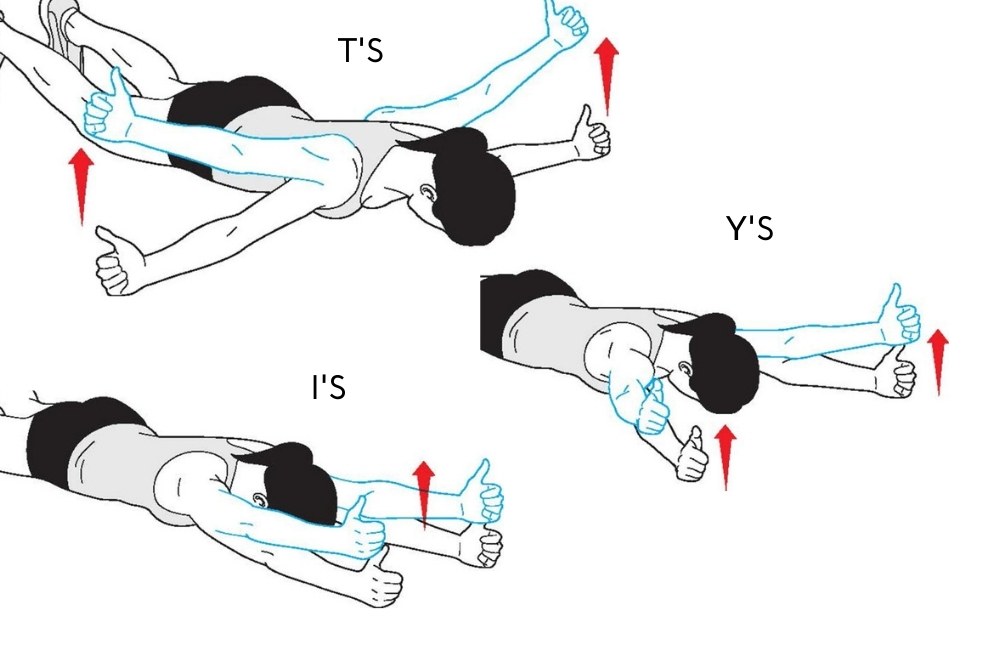
The rotator cuff and the lower traps are some of the most important muscles related to shoulder health.
Most people have significant weakness in this area. Luckily, Y’s, T’s, and I’s are some of the best exercises for strengthening this region.
This exercise is typically performed prone, but it can also be done in standing using resistance bands instead of weights.
However, I recommend first trying these moves in prone with no weight at all.
How to Perform
- Lying on your stomach, straighten your arms down by your sides, with your palms facing your pockets.
- Lift your arms off of the ground, elevating them toward the ceiling.
- Hold this position for 10 seconds, then return your hands to the ground. Repeat 10 times per session. (this is the “I” motion).
- Next, while still lying on your stomach, straighten your arms out to the side, with your palms facing the ground.
- Attempt to lift the backs of your hands up toward the ceiling.
- Hold this position for 10 seconds, then return your hands to the ground. Repeat 10 times per session. (This is the “T” motion).
- After this, position your arms above your head, with your thumbs pointed toward the ceiling.
- Lift your arms up toward the ceiling, holding this raised position for 10 seconds. Repeat 10 times per session. (This is the “Y” position).
- Perform each of these three movements once per day as described.
5. Snow Angels On Wall
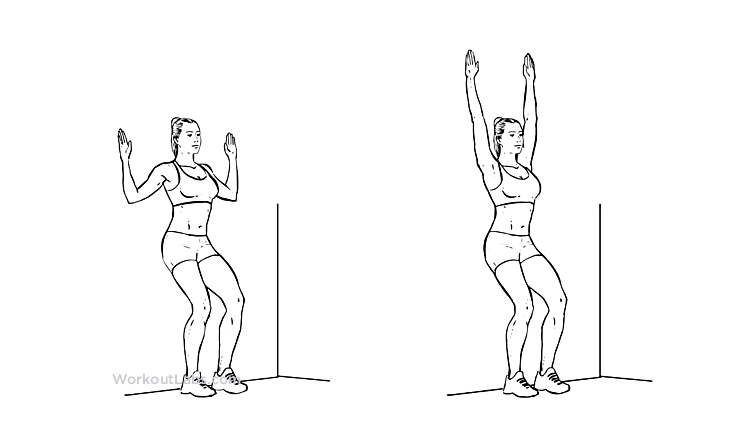
The snow angel exercise is deceptive. It looks extremely easy, but this exercise will get most people sweating and very fatigued by the end of the set.
Snow angels work the rotator cuff, the lower and middle traps, and the rhomboids.
How to Perform:
- Stand with your back against a wall.
- Keeping the back of your head, most of your spine, and your heels against the wall, raise your hands up in a “W” shape.
- Next, slide your hands up the wall toward the ceiling.
- Then, slide your hands back down the wall into the starting position.
- Be sure to keep the back of your hands and forearms in contact with the wall throughout each repetition.
- Perform 10 repetitions, as described, once per day.
6. Pushup Plus
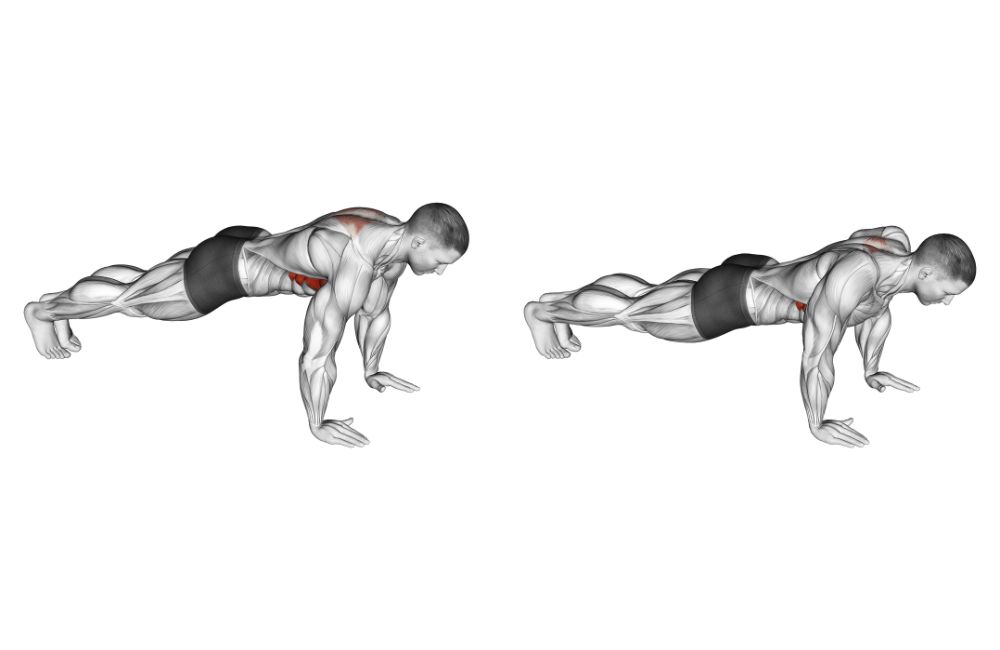
The serratus anterior is an incredibly important shoulder muscle and one that is rarely emphasized in most training programs.
By performing the pushup plus, you can vastly improve your posture and stability in your upper body.
How to Perform:
- Begin in a pushup position, with your hands and toes on the ground.
- Next, protract (round) your shoulders so that your mid back rises in the air.
- Hold this position for 10 seconds, then return to the starting position.
- Complete 10 repetitions, once per day.
7. Banded Horizontal Abduction
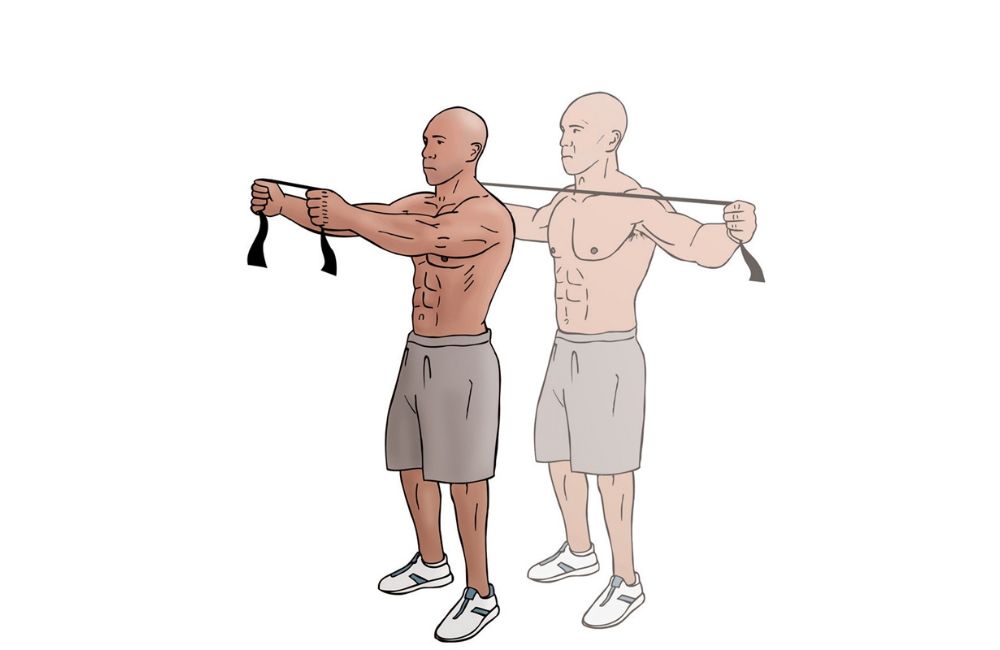
Banded exercises are particularly useful, as they provide a unique form of variable resistance.
This serves to provide more resistance to muscles in different parts of the range of motion than typical dumbbell exercises do.
If you don’t have any bands, you should consider investing in this very affordable piece of equipment. Bands last for a very long time, cost very little, and provide tons of benefits to exercisers.
This exercise works the rhomboids, middle traps, and various other stabilizers in the shoulder.
How to Perform:
- In standing, grasp a band with both hands.
- Raise your arms to 90 degrees.
- Separate your hands while keeping your arms flexed in the 90-degree position.
- Pull the band apart as far as you can, then slowly return to the starting position.
- Repeat for 10 repetitions, once per day.
- Hold this position for 10 seconds and repeat it 10 times per day.
The Bottom Line On dowager’s hump
If you are looking for ways to decrease the prominence of your Dowager’s hump, give these exercises a try!
The moves described in this article are extremely helpful for improving posture, decreasing pain, and improving mobility in your upper body.
Even if you can’t completely eliminate your Dowager’s hump, you’ll feel much better by completing these moves every day.


